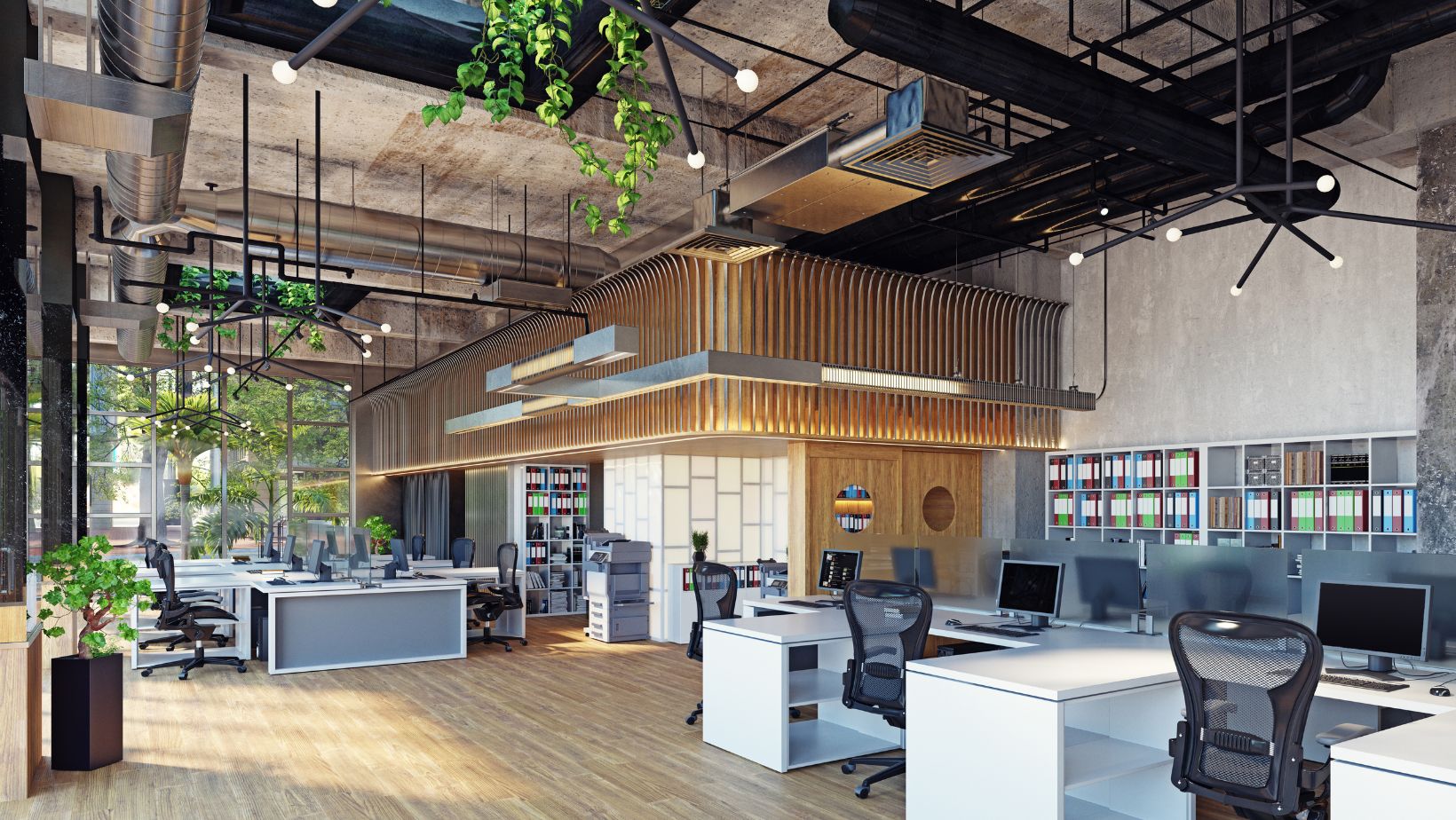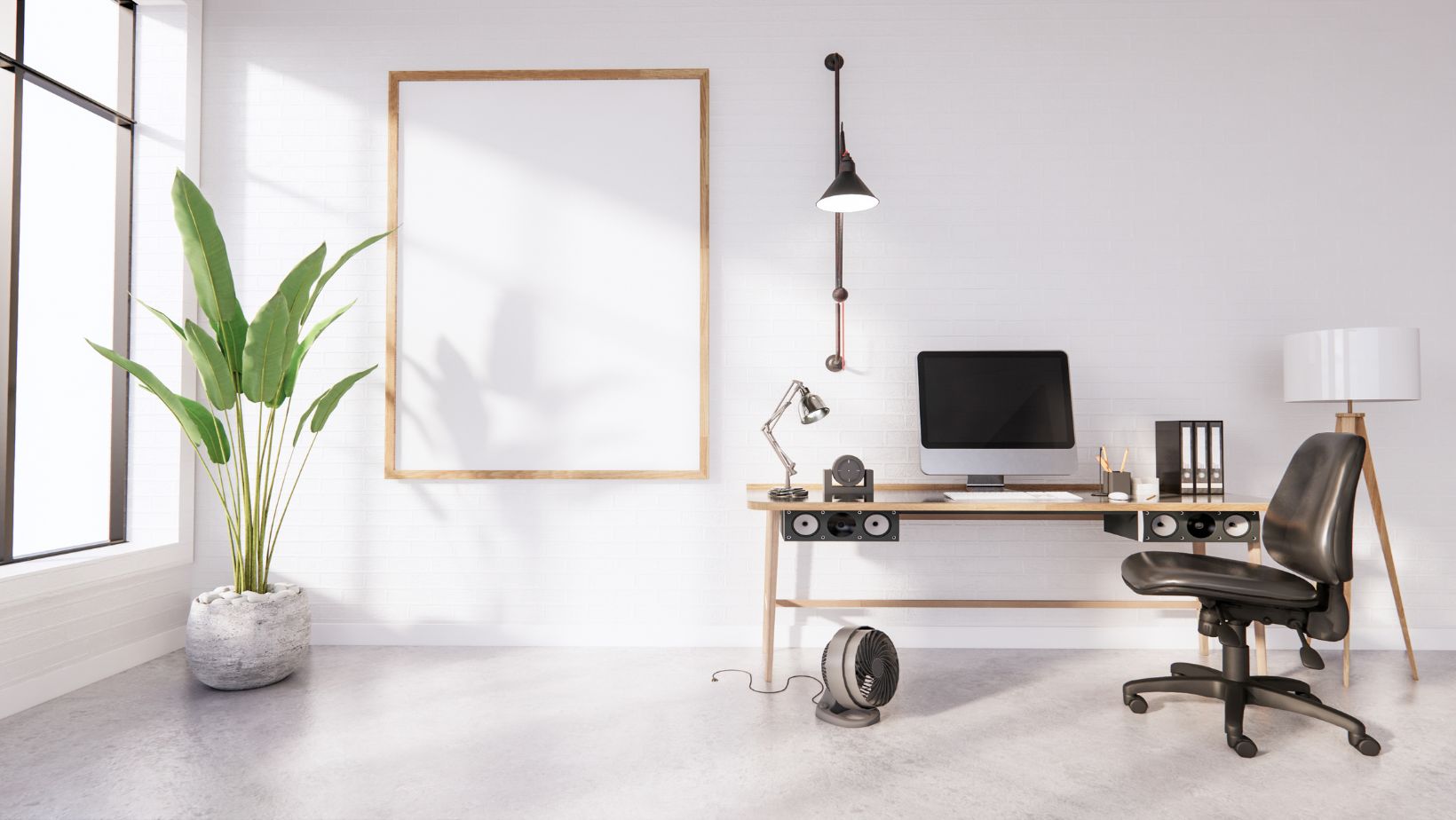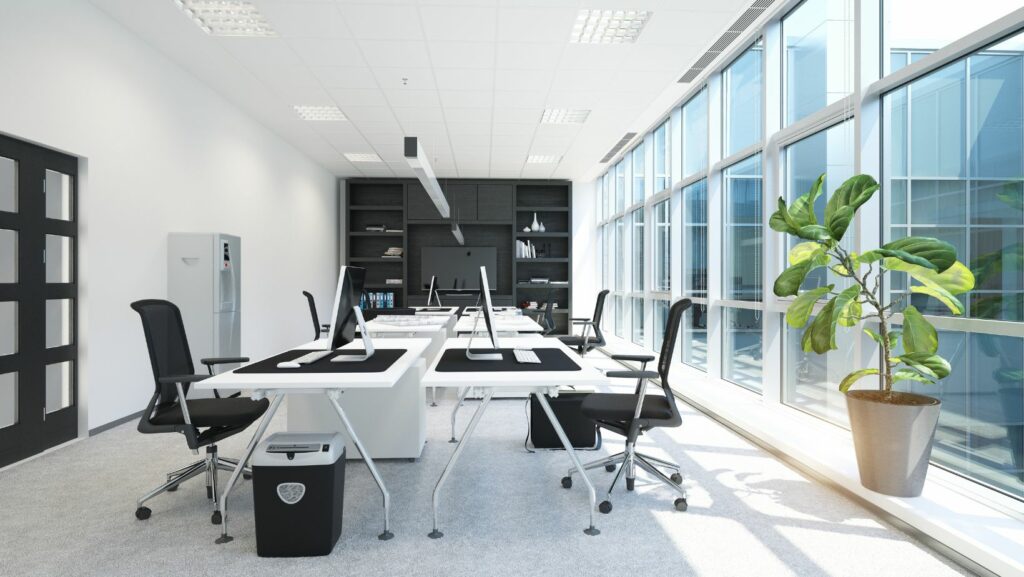To create a positive and productive work environment in the office space is not only about the furniture or about the design that has to be right. Colours directly affect the emotions of the employees and their productivity, and also the mood and concentration. Choosing the right colours for an office not only contributes positively towards the efficiency, creativity and relaxation of the employee but also the environment in which they work. In this article, we will see how particular colours affect productivity and how to use the appropriate shades in office designs.
Table of Contents
ToggleHow Productivity is Impacted by Colours in the Office
The psychology of colour is powerful. Each colour has its own effect on emotions and behaviour and we need to understand which shade will affect the working processes. Now, let us discuss how some colours influence office spaces and create a positive and productive atmosphere.

The psychology of colour is powerful. Each colour has its own effect on emotions and behaviour and we need to understand which shade will affect the working processes. Now, let us discuss how some colours influence office spaces and create a positive and productive atmosphere.
| Colour | Impact on Productivity | Ideal Office Areas | Tips for Usage |
| Blue | Boosts focus and calm | Individual workspaces, focus zones | Use on walls or decor items in quiet areas |
| Yellow | Inspires creativity and positivity | Brainstorming rooms, collaboration spaces | Add in accents or wall art for energy boost |
| Green | Reduces eye strain, promotes relaxation | Break rooms, lounge areas | Integrate plants or green decor |
| Red | Increases energy and alertness | Physical activity zones, kitchens | Use sparingly in active spaces |
| White | Expands space, creates clarity | Main walls, hallways | Balance with warm accents to avoid sterility |
| Orange | Encourages enthusiasm and collaboration | Meeting rooms, high-energy areas | Use on furniture or decor in meeting rooms |
Blue: Ideal for Efficiency and Intellectual Stimulation
Blue is often associated with calmness, focus, and stability, making it a popular choice in office environments that require high levels of concentration. Known for reducing stress and enhancing focus, blue is particularly beneficial in roles that involve numbers or detailed work, such as accounting or research.
Incorporating Blue: Consider blue for walls in workspaces or meeting rooms where concentration and mental clarity are essential. Light blues are calming and work well for overall environments, while deeper blues can make an area feel more grounded and trustworthy.
Yellow: Energising and Creativity-Boosting
Yellow brings a bright, positive vibe that can elevate creativity and energy in a workspace. Yellow colour is inspiring, helps in innovative thinking and problem solving and thus it is a colour of optimism. This colour creates warmth that helps in teamwork and openness.
Using Yellow Colour: Use yellow colour in creative or brainstorming areas as an accent colour. Limit the use of yellow colour to artwork, decor pieces or accessories like chair or stationery, as too much use of it will be overstimulating.
Green: Calming and Harmonious
Green is a versatile colour that brings balance and calmness into a workspace. This colour has a sense of calmness, which makes it ideal for places where people work for several hours. Green also means development, balance. It creates a relaxing environment, which contributes to alleviating stress and tiredness.
Incorporating Green: This colour is suitable for an office’s relaxation area or any break area where employees feel recharged.Adding green plants can boost the natural ambiance, providing both aesthetic appeal and mental relaxation benefits.
Red: Stimulating and Perfect for Active Spaces
Red is a stimulating colour. It evokes excitement and physical activity. However, it is good to use red when doing some fast-paced task or you need to do any physical activity. However, it is advisable to use Red carefully in the work environment because it results in aggression and tension at the workplace.
Using Red Colour: Red is suitable for areas where employees need to be alert such as assembly line, kitchen or even a fitness centre in the workplace.Consider using red accents on equipment or small furnishings rather than large walls to add stimulation without overwhelming the space.
White: Clean, Simple, and Clinical
White colour represents cleanliness, simplicity, and the modern era. It has a sense of openness and clarity thereby making it highly suitable for minimum use in the work environment. White finishes can make the interior look and feel more spacious and bright but the excess use of white makes the space look clinical.
Incorporating White: White is best if applied as a base coat on walls and ceilings to enhance the look and brightness of a room.Pair white with other colours to add warmth and character, preventing a sterile or overly clinical feel.
Orange: Promoting High Energy and Productivity
Orange is formed by combining red, which is associated with energy, and yellow that refers to optimism and thus Orange creates a great, enthusiastic environment. It is most suitable for places where you require high energy such as the sales floor or collaborating areas. Orange can help employees feel more enthusiastic and motivated.
Incorporating Orange: Use orange sparingly in highly active areas, such as meeting rooms where dynamic discussions take place. Orange furniture or accent walls can give a room a warm, welcoming energy without being too overwhelming.
Combining Colours for a Balanced Workplace
A successful office colour scheme often balances a few primary colours with accent shades to create a cohesive look and feel. Here are some suggestions for blending colours effectively:

- Use Neutral Backgrounds: White or light grey walls can serve as a neutral canvas, allowing other colours to shine. This prevents colours from feeling overpowering.
- Accent Walls and Decor: Paint accent walls in green or blue colour where you need concentration and productivity. Use yellow or orange colour objects in decor items to boost the energy of the room without overwhelming it.
- Natural Elements with Green: Plants and natural greenery are excellent additions to office spaces. Not only does green enhance a calm, positive ambiance, but real plants also improve air quality and add a touch of nature indoors.
- Layer Colours Based on Work Zones: Divide your office into zones with specific colours for different tasks. For instance, use calming colors like blue in focused work areas, while energising colours like orange or red can go in collaborative or meeting spaces.
Conclusion- Color, a tool to Inspire and Motivate
Colour psychology is very effective to simplify work and support a positive environment at work. When applied with the right intention, colours can improve productivity, innovation, and employee satisfaction. Selecting the right colours can help to make your environment productive and friendly and, thus improve the well-being of the employees and their performance in the office.
